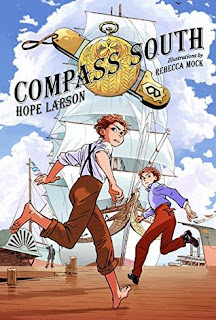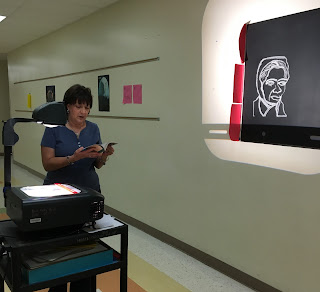Reading Scores Continue to Stagnate
A recent article in The Atlantic, "Why American Students Haven't Gotten Better at Reading in 20 Years," caught my eye and got me to thinking about reading instruction in my classroom. According to the most recent report card from the National Assessment of Educational Progress, reading scores continue to remain flat despite the haranguing of legislators, the scapegoating of District administrators, and the consternation of overworked teachers. The money, the pedagogical fads, the constant testing, the sticks and carrots--none have had any significant impact as evidenced on the NAEP graph:

The Atlantic's article suggests that schools and teachers focus too much on isolated comprehension skills and not enough on content; in other words, if students do not have background in what their reading, or if the content of comprehension practice texts varies randomly, then readers are unable to fill in knowledge gaps. "Daniel Willingham, a psychology professor at the University of Virginia who writes about the science behind reading comprehension [...] explained that whether or not readers understand a text depends far more on how much background knowledge and vocabulary they have relating to the topic than on how much they’ve practiced comprehension skills."
One suggestion, then, is to center instruction around content domains--Colonial America, the Civil War and Reconstruction, Great Depression and New Deal, etc., spending a semester or even the whole year on a limited topic; each grade level would be responsible for a specific domain. Pretty cool idea, but this is 'Murica and we're not going to let any centralized gubment tell us what to teach! Thematic units, either designed by textbook companies (yuck) or teachers are one way to increase depth of knowledge. It's a fair amount of work locating complementing informational and literary texts: primary sources, historical documents, essays, prose fiction in varied genres, but doing so provides an immersive reading experience that is likely (so the research says) to be more effective in promoting literacy.
Such a thematic approach leads into The Atlantic's next point: developing readers must wrestle with grade-level, complex text that challenges them. New words, complicated syntax, novel ideas--it's ok to struggle. That's where learning happens. "Timothy Shanahan [emeritus professor at the University of Illinois and the author or editor of over 200 publications on literacy] cites recent research indicating that students actually learn more from reading texts that are considered too difficult for them—in other words, those with more than a handful of words and concepts a student doesn't understand. What struggling students need is guidance from a teacher in how to make sense of texts designed for kids at their respective grade levels—the kinds of texts those kids may otherwise see only on standardized tests, when they have to grapple with them on their own." The teacher's role then becomes one of guide, helping students navigate unfamiliar and rocky terrain.
At the middle and high school level, language arts teachers and social studies teachers (science teachers, too?) could work together to craft thematic units and select complementing texts, sharing the responsibility for building knowledge and crafting authentic opportunities for applied literacy.
Throwing my own two-cents' worth: suggestions a for civil rights unit, developing historical knowledge and empathy for the plight of the oppressed in Jim Crow America. First, Billie Holiday's extraordinary "Strange Fruit":
You'll have to copy & paste the links for the resources below (I can't see to work out how to hot link them--sorry):
 https://www.teacherspayteachers.com/Product/Unsung-Heroes-More-Non-Fiction-Readings-from-the-Civil-Rights-Era-819934
https://www.teacherspayteachers.com/Product/Unsung-Heroes-More-Non-Fiction-Readings-from-the-Civil-Rights-Era-819934 https://www.teacherspayteachers.com/Product/Black-Voices-pre-Civil-Rights-Era-reading-practice-with-objective-assessments-295418https://www.teacherspayteachers.com/Product/Non-Fiction-Readings-from-the-Civil-Rights-Era-texts-Objective-Assessments-297522
https://www.teacherspayteachers.com/Product/Black-Voices-pre-Civil-Rights-Era-reading-practice-with-objective-assessments-295418https://www.teacherspayteachers.com/Product/Non-Fiction-Readings-from-the-Civil-Rights-Era-texts-Objective-Assessments-297522 https://www.teacherspayteachers.com/Product/To-Kill-A-Mockingbird-objective-assessment-and-instructional-notes-293640
https://www.teacherspayteachers.com/Product/To-Kill-A-Mockingbird-objective-assessment-and-instructional-notes-293640 https://www.teacherspayteachers.com/Product/Their-Eyes-Were-Watching-God-study-guide-and-objective-assessment-293794
https://www.teacherspayteachers.com/Product/Their-Eyes-Were-Watching-God-study-guide-and-objective-assessment-293794


















